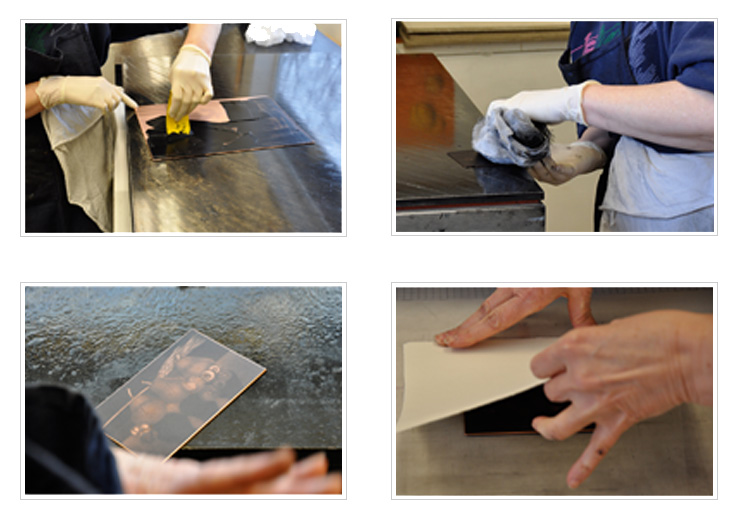Gelatin Prints: Printing without a Press
During the pandemic, I needed to find a way to make prints without using a press. Wanting to try a technique more spontaneous than etching or mezzotint, I decided to make monotypes using gelatin plates. This technique does not require many supplies and is very low tech. Images are created directly on a gelatin plate with water-soluble ink or paint and transferred to paper by hand pressure. I like to build up layers of transparent color using stencils and found objects. You can make a gelatin plate if you choose or purchase one at an art supply store. Images can be created by using brushes, rollers and other tools using transparent watercolor, gouache or acrylic paint. I have had good success using Golden Open Acrylics. Working from light to dark, it is not necessary to clean the plate between all colors. Gelatin plates clean up well with baby wipes. There are many books available about gelatin plate printing as well as many informative tutorials on YouTube.
Traditional Intaglio Techniques
Original prints are images created by an artist directly on a metal plate, stone, wood block, or other matrix and transferred to paper. Each print is a work of art; one of a limited edition and signed by the artist. Printed reproductions of art works created in other media are not original prints.
Original prints are classified based on the process by which they are created. The four basic printmaking processes are relief (wood cut, wood engraving, linocut, and rubber stamping), planographic (lithography), stencil (serigraphy or screen printing), and intaglio (etching, engraving, drypoint, and mezzotint).
Etching is part of the intaglio family, in which the image that prints is incised into the surface of the plate. In lithography, the image that prints is on the same surface of the plate or stone. In relief printing, the image which prints is raised above the surface of the wood or linoleum block.
To create an etching, a waxy acid resist known as a ground is applied to a metal plate, most often copper or zinc. There are two common types of ground: hard ground and soft ground. Hard ground is applied to a heated metal plate and allowed to cool. After the ground has cooled the artist uses a sharp tool to scratch into the ground, exposing the metal. Soft ground is applied to a heated plate and allowed to cool. It will not dry hard. After the soft ground has cooled the printmaker may apply materials such as fabrics, leaves, or objects which will penetrate the ground and expose the plate. An acid resist can also be applied in a fine mist, traditionally powdered rosin. This process is called aquatint, and allows for the creation of tones, shadows, and solid areas.
After an image has been drawn into the ground, the plate is completely submerged in an acid that eats away at the exposed metal. The etching process is known as “biting”. The ground protects the acid from biting the parts of the plate that have not been exposed. The longer the plate remains in the acid the deeper the “bites” become. The ground is then removed from the plate. Ink is pushed into the crevices that have been bitten into the plate, and then the surface of the plate is wiped clean. The ink in the crevices is transferred to damp paper by running it through a printing press.
Mezzotint is an intaglio process in which the surface of a copper plate is methodically roughened with a tooth-edged tool called a rocker. Once the plate is completely rough, it is worked with a tool called a burnisher to smooth certain areas. Burnishing flattens the surface of the plate. The smoother the plate, the less ink it will hold, and consequently the lighter it will print. Working from dark to light, the image is defined in many shades of gray.










